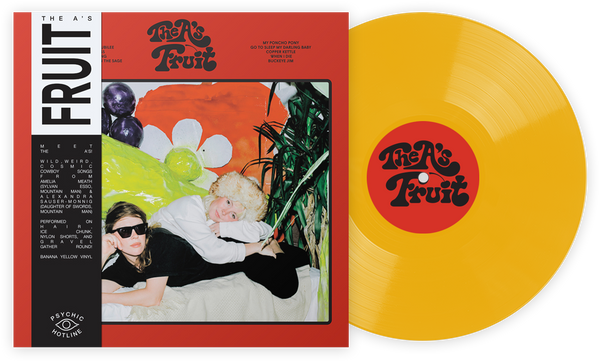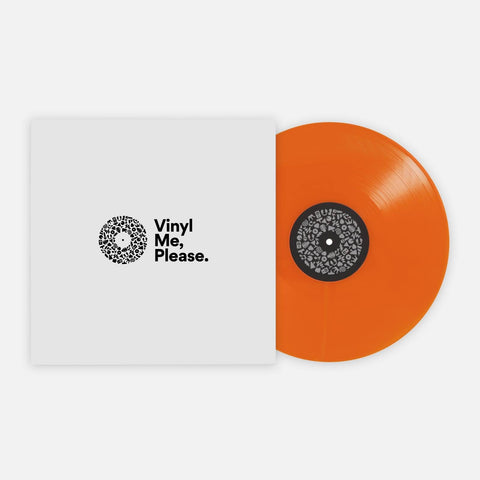Some years ago when my wife was expecting our son, the editor of one of the publications I write for noted that I had been entered on a list of contributors who could no longer be 100 percent guaranteed to return review equipment in the condition it had been dispatched in. He also noted (with the slightly sadistic smile of someone who had suffered it themselves) that my record collection would presently find itself consigned to storage “for a few years anyway.” Rather than tempt fate, I kept my mouth shut and mentally vowed not to lose a territorial battle to a being as yet unborn.
As I write this, my son is on the cusp of his fourth birthday and the reckoning so far hasn’t been too bad. I have continued to test and review equipment for magazines and websites, the overwhelming majority of sample equipment has returned to the manufacturer in the condition it arrived in and I have continued to use and enjoy vinyl throughout. I now find myself at the point where my son recently expressed an interesting in using a turntable himself, taking us to the next phase of his relationship with my records and equipment. As such, I am relaying some of my experiences up to this point. This is not an authoritative guide. I make no claim toward greatness as a parent and every child is different. We’ll start with protection and cover usage later on.
Part One: Protection
First up, if you happen to be reading this with a child on the way and thinking “Oh crap, another thing to add to the list of things to do,” I’m delighted to say you can ignore this for now. Go and enjoy sleeping, using the toilet in peace and disposable income and then revisit this a year or so. The nature of newborn children is that they aren’t in any way, shape or form a threat to your records. You are far more likely to run into issues with pets—and we’ve covered that already. For as long as your child is immobile, you can prepare for when they aren’t.
When Junior does start moving about, your countermeasures can take two distinct forms—or a combination of both. The first is to use height. We’ve gone on at length about the benefits of using a wall shelf on the performance of your turntable and this also allows you to get it up and out of the way of what’s happening nearer ground level. Don’t forget that you will need to pay some heed to the cables that connect the player to the rest of your system—they can be awfully tempting things to pull—and ensure that you are drilling into a wall that is up to the job of supporting the shelf and your turntable.
If your turntable has a lid, this should offer a reasonable amount of protection to the more delicate components but you can do more to help yourself. Make sure you refit your stylus guard each time you aren’t using the turntable and if you have an arm lock to secure the arm, make use of it. If your turntable doesn’t have a lid—and the one I’ve been using for the last four years doesn’t—I’ve had some success with leaving the arm moved across onto the platter so as not to leave it sticking out in an invitingly graspable way.
For the rest of the equipment that makes up your system, you’ll have to make some judgments on décor and practicality. I eventually fenced off my equipment rack using a play pen that had been stretched out into a sort of Berlin Wall of audio. Alas, this was not before a small singing fire engine made it into the bass port of one of my speakers resulting in it singing a jolly ditty about fighting fires for some months afterwards whenever certain low notes were played. For less sprawling collections of stuff, a cabinet with a door can be rather less fussy and space consuming. Do remember that if you are sealing your amplifier away in such a device, make sure it has sufficient ventilation to stay cool. If your offspring can reach the controls of your amp, get into the habit of checking your levels before playing a record so as to avoid putting drivers in orbit.
With your speakers, if you have grilles I would recommend using them. If you have bookshelf-type designs, popping a small quantity of blue tack under the four corners at the bottom will ensure that the speaker stays put on the stand or shelf it is placed on (and this decoupling effect can have a positive influence on sound too). My son hasn’t shown much interest in drawing on things that aren’t supposed to be drawn on but a good friend of mine wasn’t so fortunate and had some success putting a wrap of paper around the base of his speaker as a sacrificial surface. Finally—and I hope this would go without saying—make sure all mains related cabling and connections are stowed securely out of reach.
There is also the nature of psychology. It’s not for me to tell you how to play this but I’ve had reasonable success letting my son know that he isn’t supposed to touch my system and that I’ll be very sad if he were to break any of it—and sad Dad is rather less willing to sit through an hour of brain-wilting children’s television than easy going, happy Dad. Don’t mystify the equipment or make threats you can’t follow through on—your endgame is to return to whatever passed for normal before this phase as quickly as possible so you’re looking to normalise and establish your child’s part in that arrangement. I’ve been without protective fences and other such niceties for a year now and I’m very glad of that.
Finally—and here we turn to Tyler Durden—you have to let go. Prior to becoming a father, my phones would reach their replacement point looking pretty much as they did the day I purchased them, the interior of my car wasn’t sticky to the touch and I had clear surfaces. All these things are a distant memory now. I could rail against this but it’s easier to pick the battles you can win. For me, as long as the equipment stays in working order, I can live with a smudgy fingerprint here and there.
Part 2: Usage
When my son asked me if he could put a record on a few weeks ago, I was slightly taken aback. The timing wasn’t ideal I was doing the listening for a group test of phono cartridges at the time and the one actually playing at that point had a list price someway north of $1,000. With visions of a handmade moving coil stylus colliding with a record at unpleasant speeds, I made my excuses, said it wasn’t possible right now but that I would arrange it so that it was possible as soon as I could.
Now, there is no sense in me being coy here as my circumstances have shaped my attitude to letting a three year old loose on a record player. I am a hardware reviewer. As a side effect of this, I have a lot of hardware and I guess with that comes a willingness to take a punt and see what happens. My argument is not that you should let a three year old loose on a turntable but that the process that this has followed has elements that might be considered applicable for whenever you might decide to do the same.
The first thing is to be objective. Can your child perform the basic tasks of putting the record on? Using the classic Fisher Price record player (and if there isn’t one of these in your household, why not?) we worked through the basics and I figured it was worth a go for real. Now, when I say “real,” a degree of relativism is needed. I firstly removed my normal cartridge and fitted an Audio Technica CN5625AL (also known as the AT91)— yours for $20-25. I then dug a record out of the pile of “odds” that have accrued from bulk purchases and the like. You child’s first attempt at playing a record probably shouldn’t be undertaken with a record you actually care deeply about so take that into account. Beyond the stylus and the record though, the rest of most record players is sufficiently robust that provided your kids have reached the stage where they can follow basic instructions, you should be OK.
And do you know what? It went fine. To be clear, we’re some way (years) off where I’ll let him do it unsupervised but I figure the earlier we start this, the nearer that time might be. The fullest extent of what I’ve allowed him to do so far is start the platter, raise the arm lift, move the arm to the edge of the record and lower it but he did it fine and in becoming part of the process, he was happier to listen to the record as a result.
Only you are going to be able to make an accurate appraisal of when (or even if) you’re prepared to let your kids near you pride and joy. For me, it has been a logical next step in my son’s relationship with my record collection and the start of what I hope is something we can both enjoy doing. Whether at the end of this, he’s part of the next generation of analogue fans is too early to say but at least he had the chance to have a go.
Ed is a UK based journalist and consultant in the HiFi industry. He has an unhealthy obsession with nineties electronica and is skilled at removing plastic toys from speakers.
Join the Club!
Join Now, Starting at $36Pages








